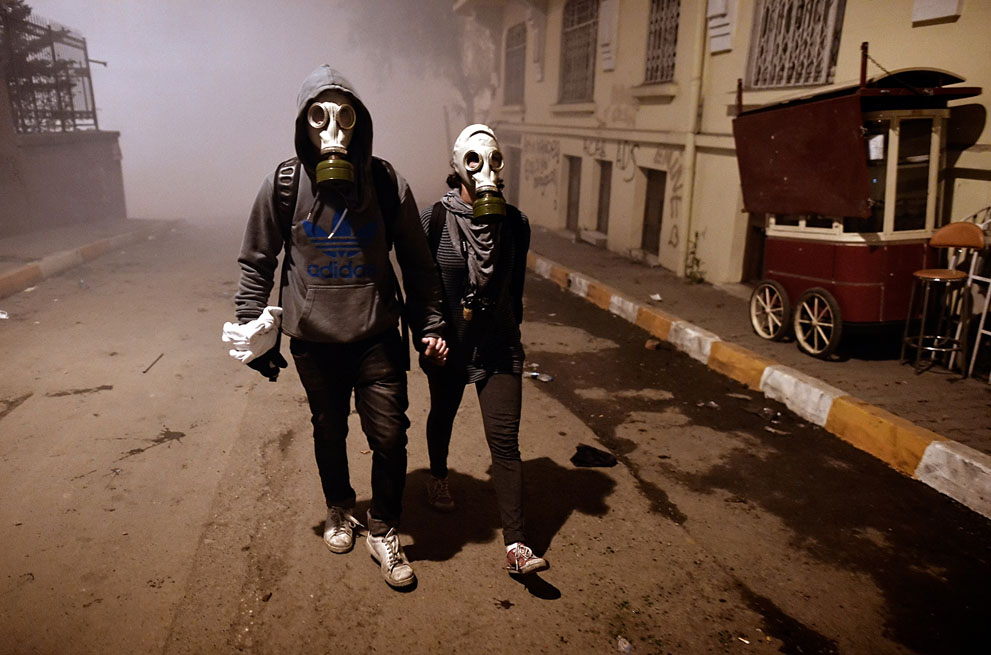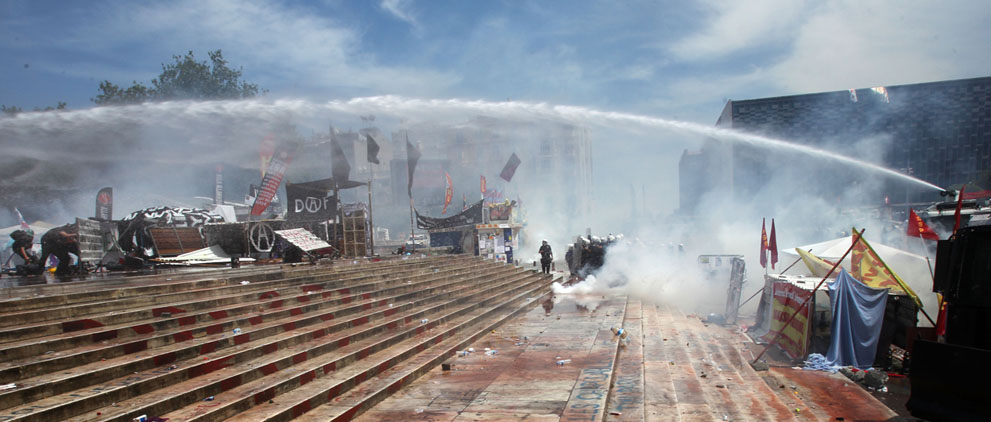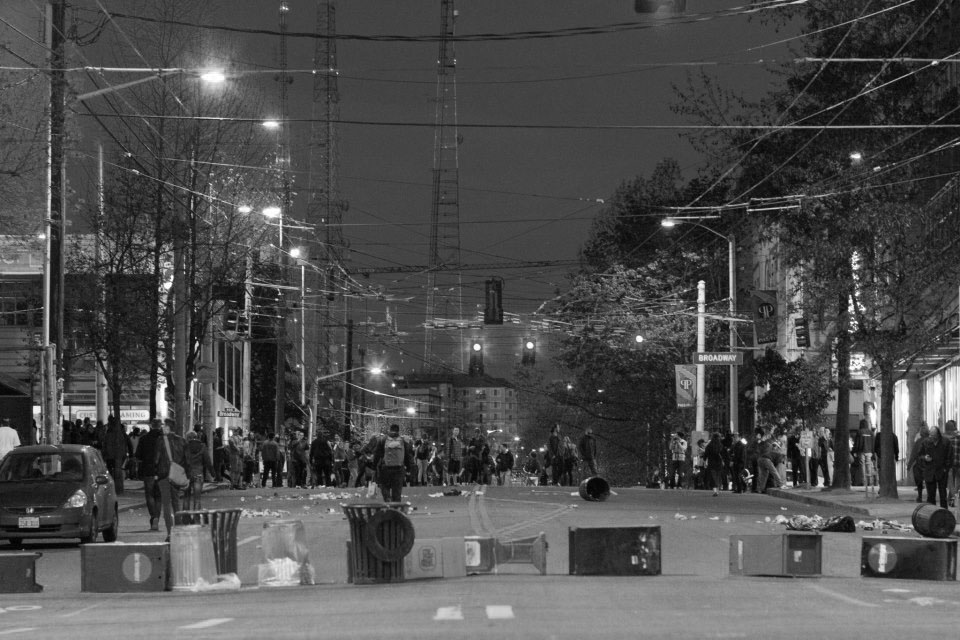from the 4th issue:
Mayday 2012: a ravenous black bloc appears, seemingly out of nowhere. The individuals involved are amassed, yet individuals nonetheless, acting according to their own rage, despair, wishes and dreams, accompanied by co-conspirators, known and unknown. Surrounding them are the demonstrators, varied and eccentric, as well as idle spectators and potential tattle-tales with their phones and cameras aimed at the momentary attraction. The media and the Seattle Police Department soon follow on foot, bicycle, and cruiser.
These various subjects are not so neatly categorized. Some exist in between lines, and a swirl of bodies makes every moment as unpredictable as the last. Such is the nature of subversive activity. We know from our experience of a controlled world that the uncontrollable element itself is the most dangerous. And for this reason the witch-hunt began. SPD has yet to learn how to consistently identify those covered in black clothing, and for every advance they make demonstrators innovate accordingly. When appropriate, their tactics change even without precipitation. The federal grand jury that convened in the Pacific Northwest starting March 2012 is a systematic attempt to identify demonstrators, target anarchists, and generate a condition of fear, all in hopes of quelling the efforts and haunting the minds of those who wish to strike out against the sources of their discontent.
The overall effects remain varied. In times of overt repression, people have the choice to scatter or come together. Generally the mix settles somewhere in between. I’ve seen previously unbridgeable gaps between individuals contract then disappear, sparking new connections and greater bonds, revealing unseen potentials for affinity. Some who were close are now closer and more potently dangerous than ever. Inversely, some have strayed, kept a distance, or otherwise fallen off. Different people have different reactions; you never really know if someone disappears because they are terrified or because they’re working with the police; perhaps some individuals decide it’s best to vanish completely and continue their conspiratorial mischief in the shadows.
Since over a year ago, there’s been a consistent flow of anarchist activity. Attacks of solidarity continue to reveal themselves by mouth, the media, and anonymous communiqués. Mayday 2013 saw a new wave of nobodies wild out on the streets of Seattle and Olympia. Those who were subpoenaed and appeared in court have been by now both imprisoned and released. Some in exile are still on the run. In other parts of the country we see repression, not directly related to the PNW, but certainly related in the sense that the State is seeking out undesirables who impose discontinuities in the timeline of historical progress. They know we coordinate with those we trust, that we do so in both the public and private spheres, and that we can act not only locally, but also nationally and internationally as well. This is why the feds have moved so viciously upon us. Conversely, we’ve come to know some things too. Many of us have grown to learn from our recent experiences, the wisdom of which I hope to touch upon now in hopes of sparking discussion:
Repression is continuous within the context of domination. The rise in support in the past year has been awe-inspiring, yet this same repression has existed since before this grand jury, before the green scare, the red scare, before repression against anti-war dissent, before the slaying of uncompromising Spanish anarchists and implacable illegalists, and it will continue after this grand jury ends. The resistance of those who seek autonomy today stems back to the original peasant revolts, indigenous struggles and all the anti-colonial efforts of the past, and while the Kings of the digital age possess technologies of mass data accumulation and an army of submissive citizens, I must still be quicker than it all, more sly and quick-witted than ever. If my friends share the same desires, perhaps we can attack with twice the power that I alone could harness.
Memory is a weapon. Now, in this sort of contextual aftermath, is the time we specifically do not forget. This is the time to resist the social amnesia that afflicts so many. Remembrance is not passive; it is expressed through activity, be it benefit events, attacks, or any effort by the creative individual to compromise the structural integrity and to atrophy the idea of social control itself. Recognizing a continuity of struggle allows us to contextualize our conditions, act with passionate precision, and care for one another. Taking care of each other while concurrently making it clear that our struggle has not ended is at the heart of the concept of living-and-struggle, a condition that refuses crystallization in either category.
Our network is global. Our current reality is a globalized one, and for this reason I challenge those in the PNW and everywhere else to think about what comes next. Now more than ever, it is important that affinities discuss the possibilities for the following year. The premise of this writing is to encourage that dialogue and all the action that could arise from it. Insurrectionary ideas are now widely understood by the anarchist milieu, and what we’ve learned from them is a sort of puissant togetherness that rejects classical organization and allows a constant critical transformation of ideas and strategy. The power we share takes form as a sort of amorphous cohesion, and this involves support across space. To this degree, anarchists are not hopelessly confined to their respective cities. On the contrary, the feeling of (and sometimes the adherence to) separateness in this terrible digitalized and globalized reality is effectively an illusion. Taking advantage of our reach is simply another tactic to be considered. As anarchists share local and regional extensions of support and attack, the enemies of anarchists coordinate across the globe. For example, west coast networks of solidarity can prioritize the struggles of the east coast, and furthermore, U.S. and Canadian anarchist networks of solidarity can support one another as well.
Social antagonism comes in waves. Finally, here we are, back in this overcast metropolis. We find here the most empowering phenomenon of surviving repression: the second wind. If it was the authorities’ intention to eliminate chaos in this city, they’ll be displeased to discover that our love-fury has done nothing but bloom and mature, and that our taste for destruction simply grows stronger in acuity. A question for Seattle: do you feel the rumbling beneath the concrete?
Amnesia is our Achilles’ heel. What drives you to act? From one’s anguish and rage to an idea of freedom or the memory of those who have fallen or are imprisoned, there is much to be driven by. As we speak, Jerry Koch is being held in contempt after being subpoenaed for the second time since 2009 in NYC. You can find information on how to act in solidarity with him on his support webpage (www.jerryresists.net). Then there’s Steve, the currently exiled PNW grand jury resister who could use our help. Ways to support Steve can be found online as well (http://solidaritywithsteve.noblogs.org). As each friend fades from our daily lives, we strike with ever-growing ferocity fueled by the despair we feel in their absence, and that space is filled with an unrelenting conviction.
There can be no tolerance for state repression and no credence for any judicial process whatsoever. By our shared value of autonomy we reject the power they claim over our lives. Support is necessary for all targeted individuals. As the wounds of repression heal, they are survived by the stories and lessons that we pass on.
Let’s not forget. Remembrance is key.





